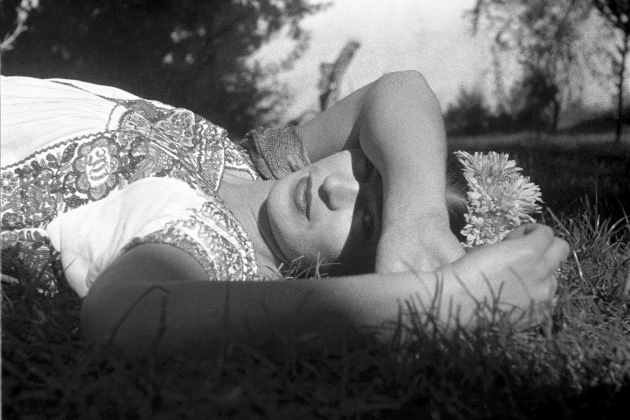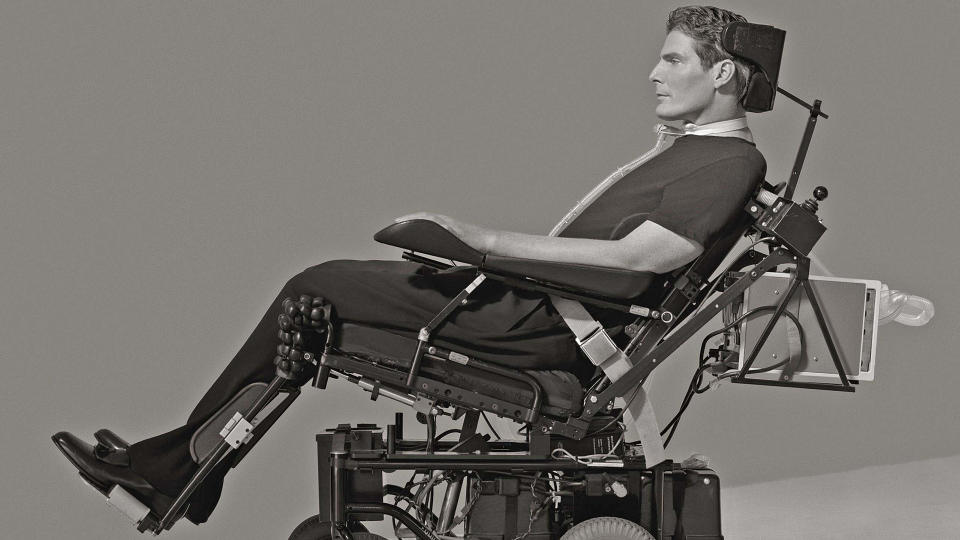Sundance Docs About Famous People Are Getting More Cinematic. Will They All Find Buyers?
- Oops!Something went wrong.Please try again later.
- Oops!Something went wrong.Please try again later.
- Oops!Something went wrong.Please try again later.
- Oops!Something went wrong.Please try again later.
- Oops!Something went wrong.Please try again later.

Given the current dismal political and cultural climate as well as streaming services’ massive appetite for celebrity driven content, it comes as no surprise that the 40th edition of the Sundance Film Festival is chock full of portrait documentaries. Frida Kahlo, Christopher Reeve, Luther Vandross and Tammy Faye are just a few of the boldface names that are being examined in various docus featured in the Sundance nonfiction lineup.
The festival is no stranger to star-driven docus. In recent years, films about Ruth Bader Ginsburg (“RBG”), Fred Rogers (“Won’t You Be My Neighbor?”), Harvey Weinstein (“Untouchable”), Michael Jackson (“Leaving Neverland”), Kanye West (“jeen-yuhs: A Kanye Trilogy”), Bill Cosby (“We Need to Talk About Cosby”) and most recently Judy Blume (“Judy Blume Forever”) and Michael J. Fox (“Still: A Michael J. Fox Movie”) had world premieres in Park City.
More from Variety
But unlike films self-produced by their star subjects, the profile docus selected for this year’s Sundance are not targeted marketing devices. They are also not traditional biopics. The increased popularity of profile docs in recent years has helped the genre become much less formulaic and far more innovative and cinematic.
Case in point: “Frida,” a docu about Frida Kahlo that debuts Thursday at the festival. Director Carla Gutiérrez uses the artist’s own words as well as exquisitely constructed animation to give audiences an intimate glimpse into Kahlo’s life. The film, which will be distributed by Amazon later this year, includes animation of 48 of Kahlo’s original paintings and 13 illustrations from her diary.
“In the beginning of the project it was very much like how are we going to get into her inner thoughts and how are we going to feel her heart,” says Gutiérrez, who received an Emmy nomination for editing “RBG” and is making her directorial debut with “Frida.” “We decided that the art is going to do that for us. We knew that it could be amazing to see colorful art coming out of this black and white world that surrounded her.”

In “Super/Man: The Christopher Reeve Story,” filmmakers Ian Bonhôte and Peter Ettedgui explore Reeve’s rise to stardom after being cast in 1978’s “Superman” while also depicting how he became a real-life superhero after suffering a tragic accident in 1995 that left him quadriplegic. To tell the dual narratives the directors seamlessly move back and forth in time during the film’s 104-minute duration, which results in a nonfiction biopic that is as devastating as it is captivating.
“It’s very easy to make a standard issue biopic, and that is pretty deadly to us,” says Ettedgui. “So we laid out this story in the chronological timeline and we started seeing that there were all of these little mirror moments and counterpoints in (Reeve’s) life before the accident and after the accident. We started thinking, God, we could actually put those together and we could create a flashback structure that enables us to contrast his life before and after, but also find these touch points, whether it’s about the whole theme of what is a hero or whether it’s the theme of family, which was pretty crucial to us.”
Unlike last year’s high-profile docs “Still: A Michael J. Fox Movie” and “Judy Blume Forever,” the buzzy project, independently produced by London-based Misfits, U.S. based Words + Pictures and Passion Pictures, is coming to the festival without a deep-pocketed distributor. “Super/Man” premieres Sunday.
“A lot of celebrity oriented documentaries these days feel quite formulaic,” says Ettedgui. “If you want to do something a bit different, you need to remain independent.”
Director Sarah Dowland also relied on going back and forth in time to tell the story of WNBA basketball legend Sue Bird. In “Sue Bird: In the Clutch,” Dowland documents the point guard’s record-setting fifth Olympic gold medal, her 21-year professional career, life with fiancé Megan Rapinoe, as well as Bird’s retirement.
“This is a character driven film, and in approaching that I was trying to do a couple of things,” says Dowland. “I wanted to chart Sue’s career, but I also wanted to weave that with the contemporaneous story of her retirement. I could use it as a device to flick back to moments of her career and build up that aspect of her.”
Despite five Olympic gold medals, four WNBA championships, and being 12-time All Star and WNBA all-time leader in assists, games and minutes played, Bird isn’t a household name, which played a role in the edit of the docu.
“I knew that there were building blocks that I needed to put in the film for people who were learning about her for the very first time,” she says. “I didn’t want them to miss those very important parts of her career that really frame her as a GOAT, and as the best point guard in women’s basketball history.”
Like Bonhôte and Ettedgu, Dowland is hoping to sell her doc, also debuting Sunday, out of Sundance.
“We’ve been seeing some fantastic documentaries about male athletes, but we don’t see as many films about female athletes even though the market is very robust for documentaries of that type right now,” says Dowland. “I certainly thought when we set out on this project, not that it was going to be easy — I don’t think finding finance for any film is ever easy or a no-brainer — but I thought that we stood a good chance of selling it from the beginning.
“That is not what happened at all,” she says. “I think there was a lot of enthusiasm for Sue and for a story about Sue, but that didn’t translate into anyone reaching into their pockets to finance the film. That was really surprising for us.”
Also seeking distribution at Sundance are two profile docus about musicians: Dawn Porter’s “Luther: Never Too Much,” about the R&B superstar Luther Vandross, and Gary Hustwit’s “Eno,” about composer, producer, self-professed “non-musician” Brian Eno, who is known for producing David Bowie, U2, and Talking Heads.
To tell Eno’s story Hustwit relied on generative artificial intelligence. The director used interviews with Eno and his contemporaries as well as hundreds of hours of video from the artist’s own archive, to assemble a “modular” film which shuffles unpredictably between time periods and mediums while offering a composite portrait of his subject. Each Sundance screening of “Eno,” starting with the film’s Park City premiere on Thursday, will be different.
“It’s a composite portrait of 50 years of Brian’s life and work and ideas,” says Hustwit. “It still to me feels like a normal cinematic documentary except that it changes every time. So one of the ways we do that is having way more content than you normally would have in a 90-something minute film. That’s so the software can choose which scenes are going to appear and in what order they’re going to appear. The software can also choose how to build transitions between those scenes and it can build its own scenes from scratch using our raw material.”
In addition to telling a life story, filmmakers are increasingly using that life to delve into something deeper.
While making the four-part docuseries “Better Angels: The Gospel According to Tammy Faye,” director Dana Adam Shapiro (“Murderball”) realized that not only were his preconceived notions about Faye wrong, but also that the story he was telling wasn’t solely about the former American evangelist.
“This isn’t just this portrait of a woman that we were wrong about,” says Shapiro of the Vice funded series seeking distribution. “We wrote it and shot it and scored it and cut it more like a thriller, because it had many of those twists and turns not just about Tammy’s life, but also American culture at the time.”
Shapiro relied on Faye’s family, friends, enemies and plenty of archival footage to examine the evangelist’s rise, fall, and unlikely resurrection. Despite an earlier doc (“The Eyes of Tammie Faye”) and a narrative adaptation featuring Jessica Chastain’s Academy Award performance, Shapiro says that he didn’t shy away from telling her story again. “Better Angels” debuts Friday.
“When you have four hours to really stretch your legs, I think it becomes more novelistic,” he says. “When you are making a (one-off), oftentimes it just has to be so lean.
“Killing your darlings is really hard,” he notes. “With four hours you actually get to let them live. Sometimes those darlings are the best parts of the film.”
Best of Variety
From 'Killers of the Flower Moon' to 'Eileen': The Best Book-to-Screen Adaptations to Read This Year
The Best 'Sopranos' Merch to Celebrate the Show's 25th Anniversary
Sign up for Variety’s Newsletter. For the latest news, follow us on Facebook, Twitter, and Instagram.

